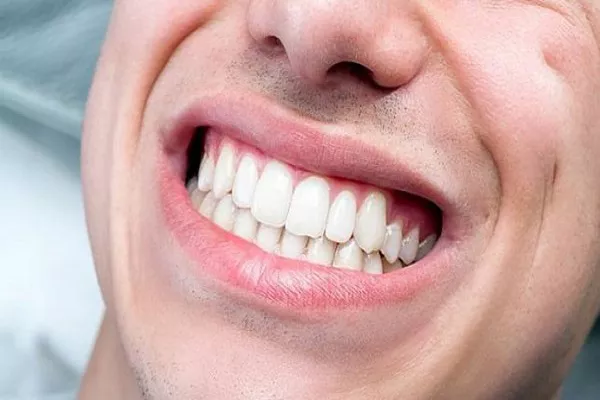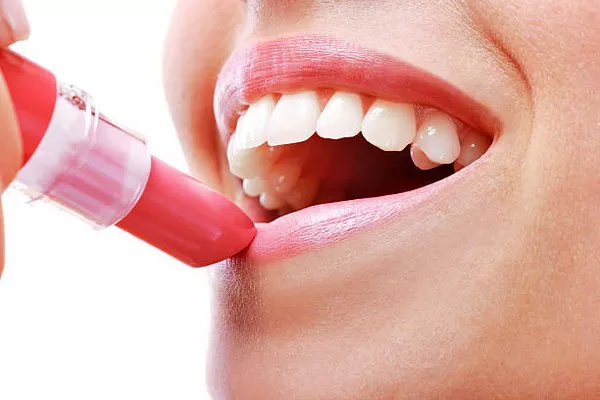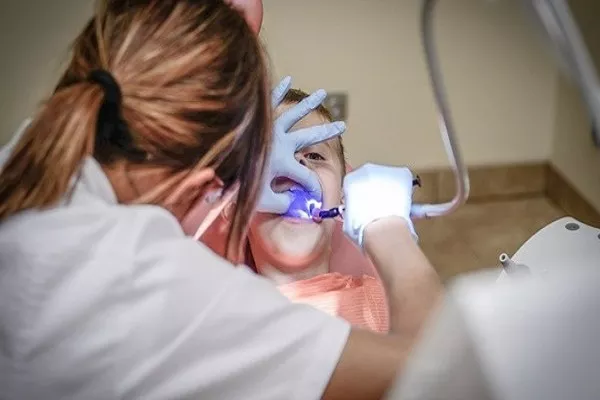Yellow teeth can be a source of embarrassment and self-consciousness for many individuals. While teeth naturally come in a range of shades, various factors can cause them to become discolored over time. Understanding the common causes of tooth discoloration is the first step towards preventing and addressing this issue.
1. Aging: As we age, the enamel on our teeth naturally wears down, revealing the yellowish dentin beneath. This process is gradual but can become more pronounced with time.
2. Genetics: Some people are genetically predisposed to have yellower teeth than others. Genetic factors can influence the thickness of enamel and the color of dentin, contributing to variations in tooth color among individuals.
3. Diet: Certain foods and beverages can stain teeth, leading to discoloration over time. Coffee, tea, red wine, and dark-colored fruits and sauces are notorious culprits for causing yellowing of the teeth.
4. Smoking: Tobacco products contain tar and nicotine, which can adhere to tooth enamel and cause significant staining. Smoking not only discolors teeth but also contributes to other oral health issues such as gum disease and oral cancer.
5. Poor Dental Hygiene: Inadequate brushing and flossing allow plaque and tartar to accumulate on the teeth, leading to discoloration. Poor oral hygiene habits can also contribute to bacterial growth, which can further exacerbate staining.
Daily Oral Hygiene Practices
Maintaining a consistent oral hygiene routine is essential for preventing and reducing tooth discoloration. Here are some daily practices to incorporate into your routine:
1. Brushing: Brush your teeth at least twice a day using fluoride toothpaste. Use a soft-bristled toothbrush and gentle, circular motions to effectively remove plaque and surface stains.
2. Flossing: Flossing daily helps remove plaque and debris from between the teeth and along the gumline, where your toothbrush may not reach. This helps prevent the buildup of stain-causing substances.
3. Mouthwash: Rinse with an antimicrobial mouthwash after brushing and flossing to kill bacteria and freshen breath. Look for mouthwashes that contain fluoride to strengthen enamel and help prevent cavities.
Proper Brushing Technique
While brushing your teeth may seem straightforward, using the correct technique is essential for optimal oral health. Follow these guidelines for effective brushing:
1. Toothbrush: Choose a soft-bristled toothbrush with a small head to reach all areas of your mouth easily. Replace your toothbrush every three to four months or sooner if the bristles become frayed.
2. Toothpaste: Select a fluoride toothpaste that effectively removes plaque and strengthens enamel. Avoid abrasive toothpaste formulations that can damage enamel and exacerbate tooth sensitivity.
3. Technique: Hold your toothbrush at a 45-degree angle to the gums and brush in gentle, circular motions. Pay special attention to the outer and inner surfaces of your teeth, as well as the chewing surfaces and the backs of your molars.
4. Duration and Frequency: Brush your teeth for a minimum of two minutes each time, ensuring thorough coverage of all surfaces. Brush at least twice a day, ideally after breakfast and before bedtime, to remove plaque and bacteria that accumulate throughout the day.
Dietary Recommendations
Making mindful choices about your diet can help prevent tooth discoloration and promote overall oral health. Consider the following dietary recommendations:
1. Limit Staining Foods and Beverages: Reduce your consumption of coffee, tea, red wine, cola, and other dark-colored beverages that can stain teeth. If you do indulge, rinse your mouth with water afterward to minimize staining.
2. Choose Teeth-Friendly Snacks: Opt for crunchy fruits and vegetables like apples, carrots, and celery, which help scrub away plaque and stimulate saliva production. Cheese and yogurt are also beneficial for neutralizing acids and strengthening enamel.
Home Remedies
While professional dental treatments offer the most effective and long-lasting results, some home remedies may help reduce surface stains and brighten your smile. It’s essential to use these remedies cautiously and consult with your dentist before trying them:
1. Baking Soda Paste: Mix baking soda with a small amount of water to form a paste, then brush your teeth with this mixture for one to two minutes. Baking soda has mild abrasive properties that can help remove surface stains.
2. Hydrogen Peroxide Rinse: Dilute hydrogen peroxide with water and swish it around your mouth for 30 seconds to one minute before spitting it out. Hydrogen peroxide acts as a bleaching agent and can help lighten tooth discoloration.
Professional Dental Treatments
For more significant or stubborn tooth discoloration, professional dental treatments offer safe and effective solutions. Your dentist can recommend the most appropriate treatment based on your individual needs and preferences:
1. Teeth Whitening (Bleaching): In-office teeth whitening treatments involve applying a bleaching agent to the teeth and activating it with a special light or laser. This process can significantly lighten the color of your teeth in just one visit.
2. Custom-Fitted Whitening Trays: Your dentist can create custom-fitted trays that hold a whitening gel against your teeth for a specified amount of time each day. This at-home whitening method provides gradual but noticeable results over several weeks.
3. Porcelain Veneers: Veneers are thin, tooth-colored shells that are bonded to the front surfaces of teeth to conceal imperfections such as discoloration, chips, and gaps. Veneers provide a durable and natural-looking solution for enhancing your smile.
Preventive Measures
Taking proactive steps to prevent tooth discoloration can help maintain a bright and healthy smile for years to come. Consider the following preventive measures:
1. Quit Smoking: If you smoke or use tobacco products, quitting can significantly reduce your risk of tooth discoloration and other oral health problems. Seek support from your healthcare provider or a smoking cessation program if needed.
2. Drink Through a Straw: When consuming staining beverages like coffee, tea, or cola, use a straw to minimize direct contact with your teeth and reduce the risk of staining.
When to See a Dentist
While minor tooth discoloration can often be addressed with at-home remedies or professional treatments, certain signs may indicate the need for a dental consultation:
1. Persistent Discoloration: If your teeth remain yellow or discolored despite regular brushing and whitening efforts, consult your dentist to rule out underlying dental issues such as decay or enamel erosion.
2. Tooth Sensitivity: Increased sensitivity to hot, cold, or sweet foods and beverages can indicate enamel damage or other dental problems. Prompt evaluation by a dentist can help prevent further complications.
Risks and Considerations
Before undergoing any teeth whitening treatment, it’s essential to be aware of potential risks and considerations:
1. Enamel Damage: Overuse of over-the-counter whitening products or improper application of professional treatments can damage tooth enamel, leading to increased sensitivity and other oral health issues.
2. Gum Irritation: Whitening treatments may cause temporary gum irritation or sensitivity. Your dentist can provide recommendations for managing these symptoms and minimizing discomfort.
Maintaining Results
To prolong the results of teeth whitening treatments and maintain a bright smile, follow these tips:
1. Practice Good Oral Hygiene: Continue brushing and flossing daily to prevent plaque buildup and maintain oral health.Use a whitening toothpaste to help remove surface stains and prevent new ones from forming.
2. Schedule Regular Dental Checkups: Visit your dentist for routine cleanings and checkups every six months to monitor your oral health and address any concerns promptly.
3. Avoid Staining Habits: Limit your consumption of staining foods and beverages, and if you do indulge, rinse your mouth with water afterward to minimize staining.
Conclusion
Preventing and addressing yellow teeth requires a multifaceted approach that includes daily oral hygiene practices, dietary modifications, home remedies, professional dental treatments, and preventive measures. By understanding the common causes of tooth discoloration and implementing these strategies, you can maintain a bright and healthy smile for years to come. If you have persistent discoloration or concerns about your oral health, don’t hesitate to consult with your dentist for personalized guidance and treatment recommendations.
FAQs About Yellow Teeth
1. Can yellow teeth become white again?
Yes, yellow teeth can often be whitened through various dental treatments and home remedies. Professional teeth whitening procedures performed by dentists can effectively lighten the shade of yellow teeth. Additionally, home remedies such as whitening toothpaste, baking soda paste, and hydrogen peroxide rinses may help reduce surface stains and restore whiteness to some extent. However, the effectiveness of whitening treatments can vary depending on the severity of discoloration and individual factors such as genetics and lifestyle habits.
2. Why are my teeth yellow at 15?
There are several reasons why someone may have yellow teeth at the age of 15. One common cause is inadequate oral hygiene practices, such as infrequent brushing and flossing, which can lead to the buildup of plaque and tartar on the teeth, causing them to appear yellow. Additionally, dietary factors, such as consuming dark-colored beverages like coffee, tea, and soda, or smoking tobacco products, can contribute to tooth discoloration. Genetics also play a role, as some individuals may naturally have teeth that are more prone to yellowing than others.
3. Can you fix naturally yellow teeth?
Yes, there are options available to address naturally yellow teeth and improve their appearance. Professional dental treatments such as teeth whitening, dental bonding, and porcelain veneers can help conceal or lighten the discoloration of naturally yellow teeth. Teeth whitening procedures, in particular, can effectively remove surface stains and brighten the overall color of the teeth. However, it’s essential to consult with a dentist to determine the most appropriate treatment option based on your individual needs and preferences.
4. Why do teeth get yellow so fast?
Teeth can become yellow quickly due to various factors, including dietary habits, lifestyle choices, and oral hygiene practices. Consuming foods and beverages that are high in pigments, such as coffee, tea, red wine, and certain fruits and sauces, can stain the enamel of the teeth and cause them to appear yellow. Smoking tobacco products can also lead to rapid tooth discoloration due to the presence of tar and nicotine. Additionally, inadequate brushing and flossing allow plaque and tartar to accumulate on the teeth, further contributing to yellowing. Regular dental cleanings and preventive measures can help slow down the rate of tooth discoloration and maintain a brighter smile over time.






























